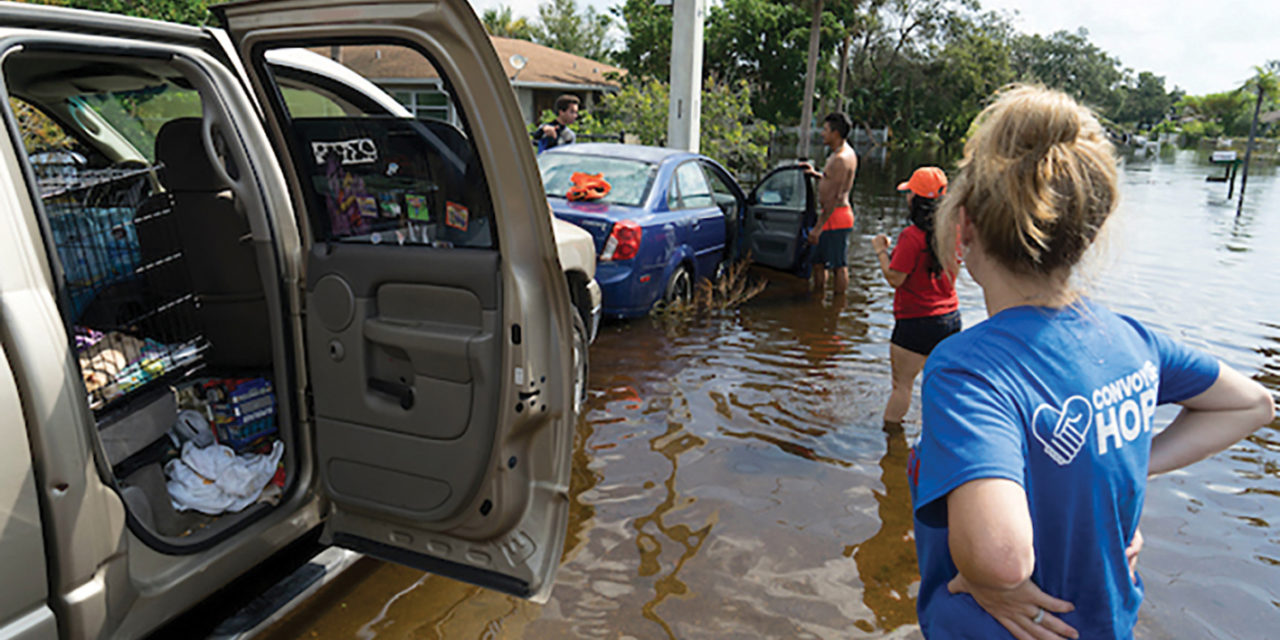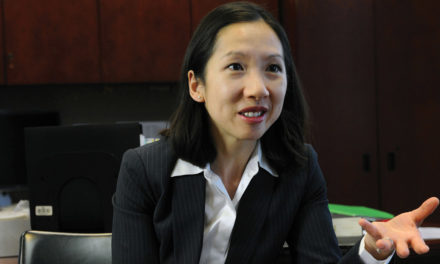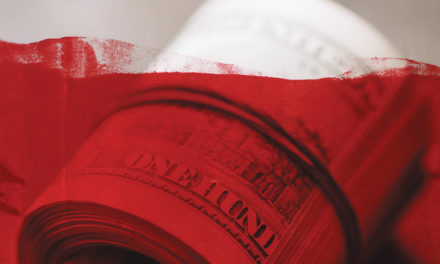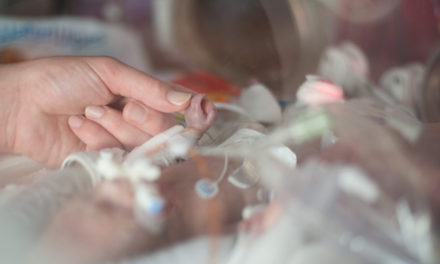Everything was turned upside down,” Lelo Washington tells Citizen, vividly recalling the day last September when she returned to the flooded-out house she had evacuated a week earlier. “The freezer was on top of my car. The icebox was on the floor. Everything was just floating from one room to another.”
Washington, a 59-year-old retiree in the southeast Texas coastal town of Port Arthur, was stunned. Hurricane Harvey had left her house with five and a half feet of standing water inside it. “I’ve lived here all my life and never seen water that high,” Washington says.
Washington was one of the millions whose lives were upended by a startling wave of death and destruction across the United States in the final months of 2017. Hurricanes in Texas, Florida and Puerto Rico. A massacre in Las Vegas. Wildfires in northern California—and then in southern California. The tragic cluster has left an imprint as deep and wide as a wound.
But as many across the country can tell you: The Healer is on the move.
The Hurricanes
The litany of life-altering shocks to the country’s system began in late August, when Hurricane Harvey struck the Texas coast with winds of 130 miles per hour, dumping torrential rains that led to extreme flooding across Houston and surrounding areas.
Hurricane Irma followed in early September, first terrorizing the Florida Keys and then battering northern Florida after being downgraded to a tropical storm.
In the middle of the month, Hurricane Maria slammed Puerto Rico—the strongest storm to hit there in 85 years—and left behind an island-wide power outage that was still affecting half its residents as this issue of Citizen went to press.
News outlets estimate the three storms combined to cause hundreds of billions of dollars in damage and kill more than 250 people, though some analysts put the death toll in Puerto Rico above 1,000.
Lelo Washington escaped Harvey’s floodwaters with her life, but her retreat the evening of Aug. 29 was filled with anxious moments.
“I happened to walk into the back room of my house and I just literally saw water pouring in through my French door,” she says.
Immediately, she phoned her neighbors and told them it was time to get out. She fired up her Ford F-150, put three of her neighbors in it, and headed for a shelter set up at the Bob Bowers Civic Center downtown.
The shelter was dry for all of 45 minutes before water rushed in and covered the floor. Washington and more than 200 others spent a sleepless couple of days living in bleachers before rescue crews ferried them to the other side of town in boats. From there, Washington connected with a family friend in a neighboring city, with whom she spent close to a week. Finally, the floodwaters receded enough for Washington to reclaim her truck and return to her house, where the walls were rotting and virtually none of her belongings were where she had left them.
“I took a chair and set it out in the street, and I just cried,” Washington says. “And then I thought, ‘I need my mom and dad.’ I have a large rug with a picture of them that the funeral home prepared for me, because my dad died 20 days before the storm. I took the rug and I put it in the yard, and that’s how I made it through the first couple weeks home.”
Washington was practically overwhelmed with sorrow—not just for herself, but for the families around her whose lives were also in tatters. A devout Christian, Washington sensed a tug from the Lord.
“God said, ‘Well, what do you have left?’ And I said, ‘Well, I got a roof and I got a garage.’ And so I used that.” She set up a fax machine and computer in her garage that anyone in the neighborhood could use for free.
Washington also recalled coming into contact with Convoy of Hope, a Christian nonprofit organization
specializing in disaster recovery, after Hurricane Rita in 2005. She called the ministry and offered to help however she could.
And her little mite was multiplied. For three days, Washington’s driveway became a distribution hub for Convoy of Hope. Crews distributed four tractor-trailer loads of food, water, hygiene kits and cleanup supplies to the neighborhood. “Once the stuff would get there, it would be gone by the end of the day,” Washington remembers.
Convoy of Hope worked alongside dozens of local partners—mostly churches—over the last few months of 2017, responding to hurricanes in Texas, Florida, Puerto Rico and the British Virgin Islands.
After reaching out to her neighborhood, Washington is confident God is planting eternal seed.
“When we passed out the food, some of the people I was raised with came to the house,” she says. “I had never heard them talk about God until they’d come to the house and say, ‘Lelo, I know God’s trying to tell me something. He’s talking to me.’ And so my response was, ‘OK, well, when are you going to listen?’ ”
The Shootings
On the night of Oct. 1, about 22,000 country music fans were winding down three days of watching some of the genre’s biggest stars perform at the Route 91 Harvest Festival in an open-air venue just off the Strip in Las Vegas, Nev. But at 10:05 pm, the festive atmosphere was ripped apart by a hail of semi-automatic gunfire raining down from a thirty-second-floor suite at the nearby Mandalay Bay Hotel and Casino.
The horror that erupted over the next 10 minutes was the worst mass shooting in modern American history: 58 people killed, 546 injured. The gunman, 64-year-old Stephen Paddock of nearby Paradise, then took his own life. His twisted motive remains a mystery to investigators.
“I never expected to see this in my city. I saw this type of thing in Afghanistan,” says US Army Chaplain Stan Harvey, who is also the congregational care pastor at Hope Church in Las Vegas.
The morning afterward, Hope—a large, multicultural congregation—sent counselors to the hotel to comfort distraught workers. Other staff counselors with more specialized training joined stress debriefings for those who were actually caught up in the shootings. Still others, including Harvey, headed for the Thomas & Mack Center, a sports arena at the University of Nevada-Las Vegas, where people were finding out whether their relatives were dead or alive.
“You see people that have seen too much death and they have what they call that thousand-yard stare,” Harvey tells Citizen. “You saw law enforcement and first responders with that thousand-yard stare. Everyone had seen too much death and too much suffering.”
What Harvey didn’t yet know was that one of his fellow soldiers, an Army National Guard staff sergeant attending the concert, had also perished in the massacre. “I cried a lot of tears,” Harvey recalled.
Harvey provided comfort at memorial services honoring his friend–and then was able to share the Gospel with other soldiers and their families as a result, leading several to the Lord in the days that followed.
“Those opportunities just happened over and over again,” Harvey explains. “We absolutely had a city with a sensitivity to God that we hadn’t seen before.”
Just as Las Vegas began to recover, 26 more people died and 20 others were hurt when a gunman opened fire on a Sunday morning service at First Baptist Church in Sutherland Springs, Texas, on Nov. 5. Devin Patrick Kelley’s rampage was the deadliest shooting at a place of worship in modern U.S. history. (Kelley, 26, was later found dead of a self-inflicted gunshot wound.)
Within hours, chaplains from the Billy Graham Rapid Response Team (RRT) were at the church, offering spiritual support.
RRT responded to all the tragedies discussed in this story, but International Director Jack Munday says the Sutherland Springs shooting was the most demanding: In addition to the adults who died, his team had the delicate task of comforting families whose children had just been murdered—their ages ranging from 16 to 1.
The Wildfires
Northern California’s wine country, normally the epitome of pastoral charm, was overrun by a series of 17 devastating wildfires in October that destroyed 245,000 acres and 8,400 buildings, prompting 90,000 evacuations and claiming a staggering 42 lives before the month was out.
The other end of the Golden State was also ravaged. Flames kicked up by Santa Ana winds started roaring through the bone-dry hills of southern California on Dec. 4. The worst of the 29 wildfires streaking through the area, the Thomas Fire, scorched close to 300,000 acres, forced over 200,000 residents to evacuate, led to two deaths and destroyed more than 1,000 buildings over three weeks.
The Thomas Fire proved such an immense challenge that firefighters were called in from all over the state to help with the response. Uriah Harris, 29, a member of the Red Bluff Fire Department in northern California, was among them. His wife was pregnant with their second child and nearing her due date when he got the call.
Harris’s assignment wore him down right away. The high winds, hilly terrain and furious flames made the Thomas Fire more physically taxing than the others he’d battled in his eight years as a firefighter. On top of that, he had to look frightened people in the eye every day and tell them to leave their homes.
“A lot of avocado farms were down there, and at $25,000 a tree, people lost a lot of revenue, a way of life,” Harris tells Citizen. “When you see that devastation on peoples’ faces, it really wears on you.”
The mental and physical exhaustion pushed Harris to the breaking point. A troubling combination of emotions—hate, bitterness, jealousy—set in, especially at night.
“I’d wake up in the sleep trailers just in a claustrophobic frenzy. I’d flip open the curtains and felt like evil was bearing down on me all the time,” Harris says. “And so I’d pray. I’d pray and I’d cry. I’d cry myself right to sleep.”
Though his late stepfather was a pastor, Harris didn’t consider himself a man of faith. Yet now he was praying—for sleep, for his pregnant wife 12 hours away, for relief from his bewildering dark cloud. He was also curious about the Billy Graham RRT trailer set up near the firefighters’ sleeping quarters.
On the morning of Dec. 19, he stepped into that trailer. Harris’s two weeks in Ventura County were ending and his wife Shanese had just given birth to a healthy son that morning, as Uriah talked her through the delivery over FaceTime. Feeling a surge of refreshing joy, Harris thought the RRT trailer was the right place to utter a grateful prayer.
As they shared in his elation, the RRT chaplains also got to know Harris and his struggles. They sensed something beyond even his son’s birth had drawn him inside.
They were right.
One Bible passage from his church background had stuck with Harris: The words of Jesus in Matthew 7:23, in which some people extolling their works are told, “I never knew you. Depart from me.” Harris says that devastating indictment of false faith was lodged in his soul, and somehow bubbled to the surface amid his swirl of conflicting emotions: “I wanted to make sure He knew me.”
The chaplains, recognizing the Holy Spirit at work, prayed with Harris as he placed his trust in Christ. “He wanted my whole heart,” Harris tells Citizen, “and He got it that day.”
Redemptive Power
As this issue of Citizen headed to press, the flood waters had receded in Texas. Power was restored to many parts of Puerto Rico. The flames had been corralled in California, and the Las Vegas concertgoers had long since returned home to mend and move forward.
The tumultuous final months of 2017 may have wreaked widespread calamity across our country—but they also displayed the goodness of a God who reaches into the depths of despair and somehow brings good out of devastation.
Harris is back home with his family and growing in his faith. He’s studying the Bible daily, attending a local church, and his wife is curious about the change in his life.
In Las Vegas, Harvey says the many vigils and prayer services held by Hope and other churches attracted throngs of traumatized people who didn’t usually go to church but were looking anywhere for answers. Many—possibly hundreds, he estimates—became Christians. Over the next several months, his church will help walk them and the whole community through the healing process.
“What we’ve been committed to doing is providing an enduring response to that one night of trauma,” says Harvey, who adds part of the response will include Hope Church holding regular blood drives through the spring.
As Citizen went to press, Washington was living in the garage of her gutted Texas home, waiting on a government trailer for temporary housing while repair crews restore the rest.
Washington says helping her neighbors through the recovery has given her a stronger sense of God’s presence than ever before. Her high school nickname was “Mother Hen” because she stuck up for kids who were mistreated. When she retired from the oil and gas industry 13 years ago, she cared for her elderly parents until they passed. All of that, Washington believes, was God preparing her to care for her neighborhood after Harvey.
“Whatever storm you’re in,” she says, “you ask God to help you understand why you went through (it).
“He never left us and He never will.”
For More Information:To learn how to join the Billy Graham Rapid Response Team as a volunteer chaplain, visit http://bit.ly/2CFWLGh. Find out more about volunteering for Convoy of Hope at http://bit.ly/2ElZrcu.
Originally published in the February 2018 issue of Citizen magazine.






